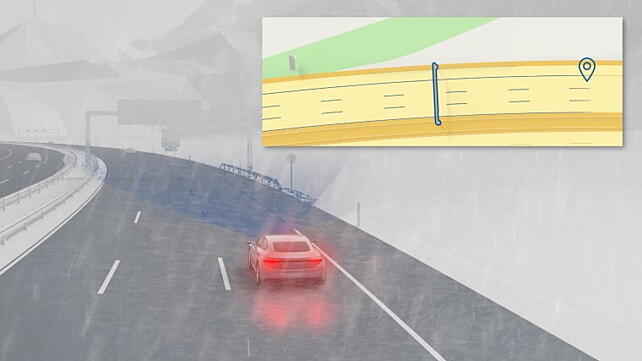
One of the most critical aspects of automated driving in the future would be highly accurate digital maps. Precise positioning of destinations and routes would be the mainstay as far as autonomous vehicles are concerned.
Bosch Group, the leading global supplier of technology and services, and it largest business group – Mobility Solutions – is precisely offering solutions to these needs with its Road Signature.
The Bosch Road Signature is a cloud-based service that uses real-world traffic data from sensors to provide multilayer high-resolution maps and keep them up to date. It uses information from radar and video sensors, as well as vehicle motion data, and augments common navigation maps with additional layers for vehicle localisation and control, said the group.
Most importantly, these additional layers are compatible with typical map formats. While the company is currently generating data to set up the road signature, vehicles will feature the signature along with an initial number of services starting 2023.
Dr Mathias Pillin, President of the Bosch Cross-Domain Computing Solutions division said the more vehicles that provide information now and in the future, the larger and more robust the database will be for automated and assisted driving. The company plans to use current data to continuously expand the signature and keep it up to date.
Volkswagen is Bosch’s partner in this initiative, with the high-volume Golf 8 in Europe. VW has also committed to offer other vehicles in the future.
While on the road, the vehicle fleet uses surround sensors to generate information about landmarks such as road signs, guardrails, curbs, and lane markings. The vehicles then send the data completely anonymously via the VW cloud to the Bosch cloud. The solution ensures that only the information required for the map layers is transmitted. All of this comes together to create the road signature in the Bosch cloud, producing a kind of digital twin of the real environment.

The Bosch road signature allows vehicles to determine their position accurately and in real time. Each vehicle compares the information currently provided by its surround sensors with that of its digital twin. This comparison enables the cars to accurately determine their position in the lane down to a few decimetres relative to the highly accurate map, the company claimed.
The use of radar helps the solution to reliably deliver accurate data even in adverse weather conditions such as fog, rain, and snow – conditions which make it difficult, if not impossible, for a camera to perceive its surroundings.
Aiding automated vehicles
Specifically for autonomous vehicles, the road signature enables safer and more convenient lateral and longitudinal guidance, with information about landmarks, road geometry, lane layout, road signs, and speed limits.
The solution can also map typical driving behaviour at specific locations, including how human drivers approach a curve, or when do they step on the brakes before an intersection. Motion data such as speed, steering angle, and wheel speed are used to get such information.
The idea of road signature is to help make automated driving an experience that is as natural, comfortable, and safe as possible.